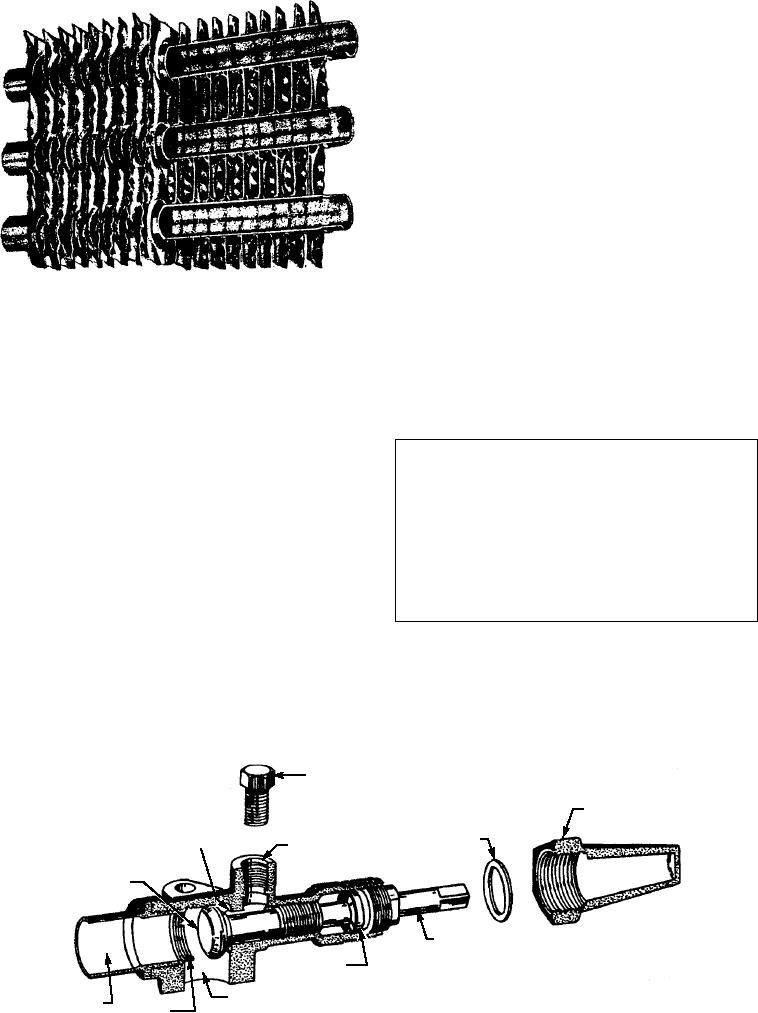
Service Valves
Service valves (fig. 11-13), referred to as discharge
(head) and suction valves, are provided for charging
(filling) the system and for use during some
maintenance operations. The discharge valve is
mounted on the high-pressure port of the compressor;
the suction valve is mounted on the low-pressure side.
Construction of the valves and their method of
operation are identical. However, they differ in size,
use, and placement.
The service valves for the compressor and receiver
have caps that must be removed prior to seating the
valve. There are three "seating" positions: front-seated,
back-seated, and mid-seated.
ASf11012
F R O N T- S E AT E D . -- W h e n t h e v a l v e i s
Figure 11-12.--Construction detail of an evaporator.
front-seated, all outlets are closed and refrigerant is
trapped in the component (compressor or receiver). To
front seat a service valve, turn the valve stem clockwise
EVAPORATOR
as far as it will go. This puts the valve stem to the left
and tight against the front seat, and stops refrigerant
The evaporator (fig. 11-12) is a band or coil of
flow at the valve.
thin-walled tubing in a block of thin metallic fins. As
the refrigerant is passed through the coil, warm air to be
cooled is passed over the outside. Heat transfers from
WARNING
the outside air to the refrigerant through the fins and
metal walls of the coil. The heat passing to the
Never operate the compressor with the discharge
refrigerant causes it to vaporize. (Remember, R-22
service valve front-seated. This condition blocks the
vaporizes (boils) at -41F.) And, as the refrigerant
output of the compressor and causes its pressure to
vaporizes, it cools the coil, which cools the warm air
build up enough to become dangerous to personnel.
passing over it. The refrigerant exits the evaporator as a
Even if no explosion occurs, the compressor will
cool vapor at low pressure.
almost certainly sustain damage.
ACCESSORY COMPONENTS
BAC K - S E AT E D . -- T h e s e r v i c e v a l v e i s
back-seated for normal operation. In this position, the
There are various accessories that can be added to
refrigerant line to the system is completely open, and
the major components to provide either simplified
the servicing/gauge port is closed. To back seat a
maintenance or increased efficiency without changing
service valve, turn the valve stem counterclockwise as
the function of the refrigeration system.
far as it will go.
GAUGE
PORT
PLUG
VALVE
CAP
BACK
WASHER
SEAT
GAUGE
PORT
VALVE
PLUNGER
VALVE
STEM
VALVE
PACKING
GAS
ASf11013
GAS
FORWARD
LINE
LINE
SEAT
Figure 11-13.--Service valve.
11-14

